

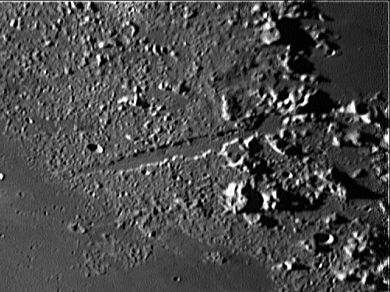 |
Lunar image of the 10th day moon. Alpine Valley Physical date: Length: 130 km, Width: 8 km; Cleft in floor is well known high resolution challenge for amateurs.
Date: 10th Apr, 2003 15:28UT
|
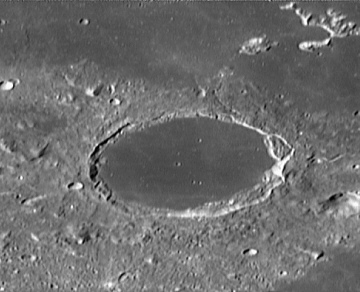 |
Lunar image of the 13th Day moon. Crater plato. Note the number of small crater visible in plato itself. This is a very high resolution image for a 10" scope.
Date: 15th Mar, 2003 15:28UT
|
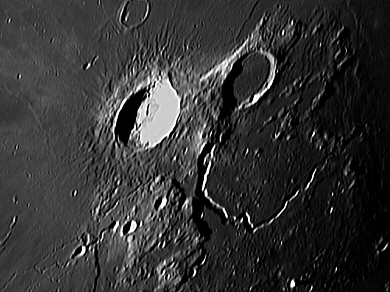 |
Lunar image of the 13th Day moon. The bright crater aristarchus, on it's right crater herodotus and valley Vallis Schroteri. Note the distinct shadows.
Date: 15th Mar, 2003 15:22UT
|
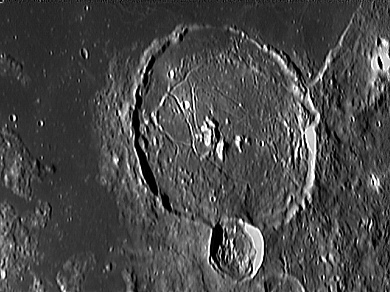 |
Lunar image of the 13th Day moon. Crater Gassendi, Crater Gassendi A on it's lower end.
Date: 15th Mar, 2003 15:17UT
|
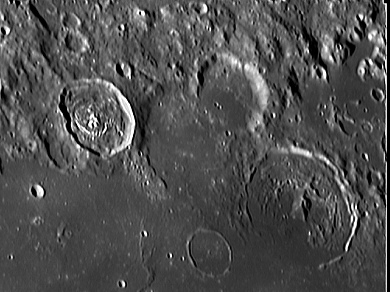 |
Lunar image of the 13th Day moon. Crater Vitello on the upper left, crater Lee on it's right. Crater Dopplemayer on the lower right and Crater Puiseux on the lower bottom.
Date: 15th Mar, 2003 15:15UT
|
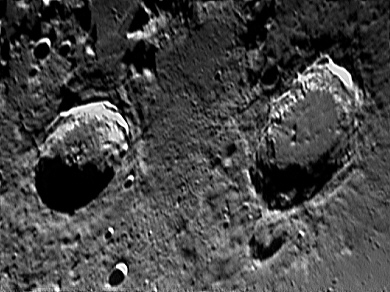 |
Crater Eudoxus and Aristoteles of the 7th day moon. The crater Mitchell can be seen on the lower left of Aristoteles. west is up on this image.
Date: 10th Mar, 2003 12:38UT
|
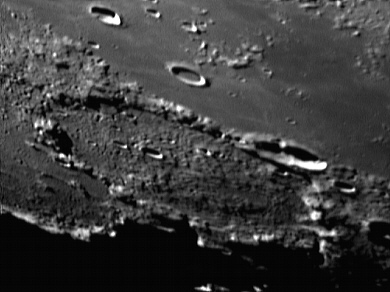 |
The crater J.Herschel of the 13th day moon. Horrebow on it's upper right hand side. Anaximenes to the north. South is up in this image.
Date: 13th Feb, 2003 15:11UT
|
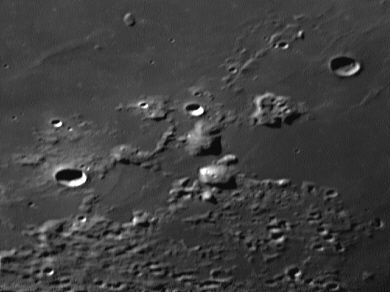 |
Moon image 13th day moon. Featuring Gruithuisen, Gamma, Delta, Mairan A and Mare Imbrium. Gruithuisen Gamma is about 20 km wide and 1200 m high; Gruithuisen Delta is 13 km wide and 1550 m high. This image is selected as Lunar Picture of the Day (LPOD) Date: 13th Feb, 2003 15:22UT
|
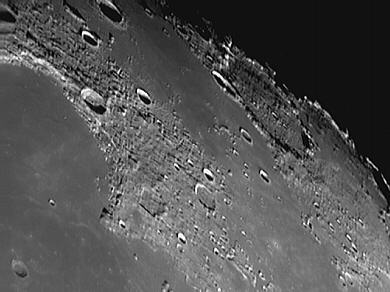 |
The crater field near Mare Frigoris, Sinus Iridum and Sinus Roris. The big crater is J. Herschel and scarred on its southern rim by little Horrebow - imaged on 25th March 2002 through the Celestron C11 at F/22 with Philips ToUcam Pro. |
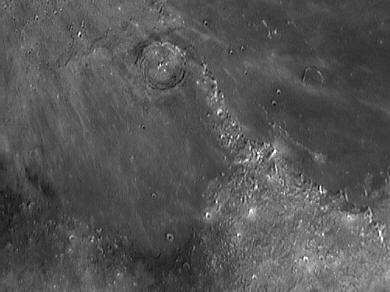 |
eratosthenes area - imaged on 25th March 2002 through the Celestron C11 at F/22 with Philips ToUcam Pro. |
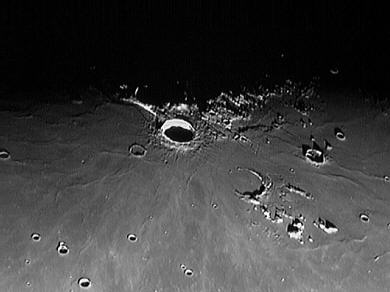 |
The young crater Aristarchus greets the rising sun. The largely destroyed ancient crater is Prinz - imaged on 25th March 2002 through the Celestron C11 at F/22 with Philips ToUcam Pro. |
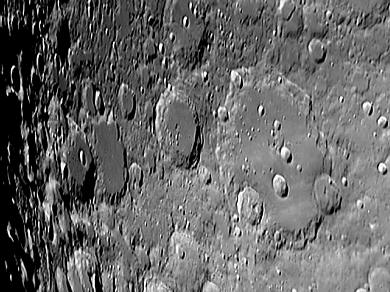 |
The big crater with several small craters inside is Clavius - imaged on 25th March 2002 through the Celestron C11 at F/22 with Philips ToUcam Pro. |
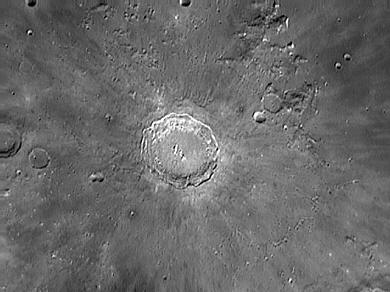 |
This distinct crater is Copernicus - imaged on 25th March 2002 through the Celestron C11 at F/22 with Philips ToUcam Pro. |
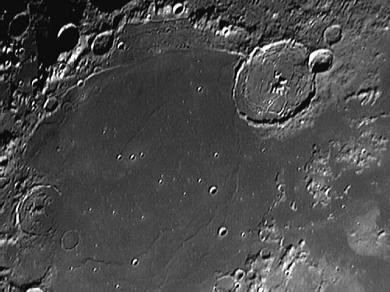 |
The smaller crater to the upper right of the image is gassendi - imaged on 25th March 2002 through the Celestron C11 at F/22 with Philips ToUcam Pro. |
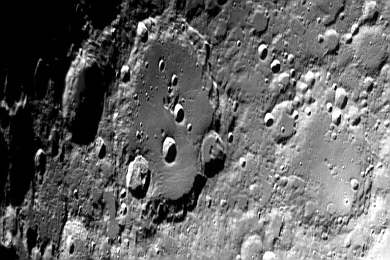 |
The big crater with several small craters inside is Clavius - imaged on 30th July 2001 through the Celestron C11 at F/23. |
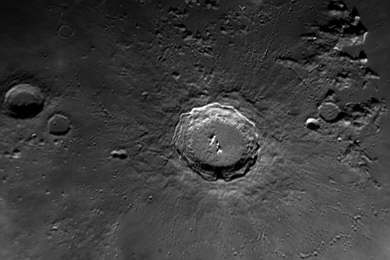 |
This distinct crater is Copernicus - imaged on 30th July 2001 through the Celestron C11 at F/23. |
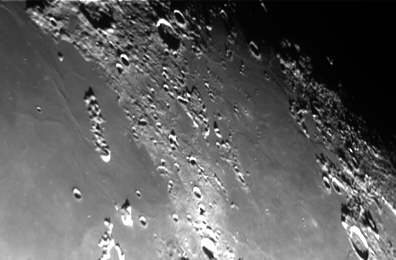 |
Mare Frigoris regions just West of Plato. Top left hand corner is Promotorium Laplace. Top left big crater is Maupertius and Top right big crater is la Condamine - both craters in the Jura mountains - imaged on 30th July 2001 through the Celestron C11 at F/23. |
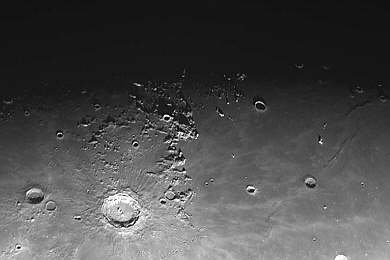 |
Most prominent crater is Copernicus. Two craters left of Copernicus - Bigger one is Reinhold and smaller one is Reinhold B. Jugged highlands just right of Copernicus are the Carpatian Mountains. Further left into the smooth are half bright distinct crater is Pytheas and slightlt larger crater left of Pytheas is Lambert. - imaged on 30th July 2001 through the Celestron C11 at F/10. |
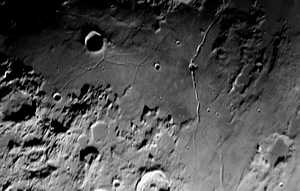 |
Rimae Triesnecker & Hyginus area - imaged on 28th June 2001 through the Celestron C11 at F/23. |
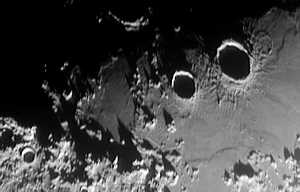 |
Aristoteles and eudoxus - imaged on 28th June 2001 through the Celestron C11 at F/23. |
| Home
| About Me |
Guest Book |
Article
| News
| Links |
Email Me |
Best view at 1280x800 resolution
All images and Texts on these pages are Copyrighted.
It is strictly forbidden to use them without the written authorization of the author.
|
[an error occurred while processing this directive] |
Last revised: April 10, 2003. |